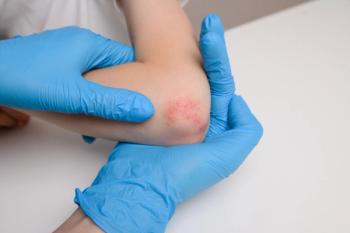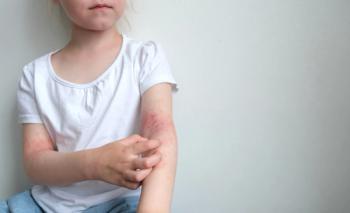
More Options Than Ever Before to Treat Skin Infections
A presentation at the New Wave Dermatology Conference highlighted the risk of lice and scabies for increasingly older patients—and what treatments are available.
The age of the “selfie” has increased the age of the patient that may come into your office presenting with lice.
Because selfies are often taken with more than one person leaning their heads into one another for that perfect friend or family moment, lice have free range to travel from one head to another, meaning that was once traditionally a child-only problem, has expanded the age range of patients that may have them, according to Theodore Rosen, MD, who is a professor of dermatology at Baylor College of Medicine in Houston, Texas, and discussed treatments for lice and other issues at the Florida Society of Dermatology Physician Assistants New Wave Dermatology Conference being held this week in Coral Gables, Florida.1
According to the CDC’s website, “although reliable data on how many people in the United States get head lice each year are not available, an estimated 6 million to 12 million infestations occur each year in the United States among children 3 to 11 years of age.”
The good news, Rosen said, is that there is a readily available over-the-counter ivermectin lotion that was approved in October of 2020 that can treat patients over the age of 6 months. He noted while the commercial price is in the hundreds of dollars, there are coupons online that can be found that can knock that price down significantly for patients in need of this treatment.
Discussing other parasitic skin infections, Rosen said that scabies is becoming increasingly less sensitive to therapies, citing a report in the Journal of the European Academy of Dermatology and Venerology that noted of 155 patients in an Italian study, only 34 responded to permethrin.2
Despite decreasing response rates to some treatments, new options are now available, he said, noting that spinosad (Natroba; ParaPRO) received FDA approval just about a year ago, on April 28, 2021. According to a company press release, spinosad was approved for head lice in 2011, and the approval for scabies was based on newer data from phase 3 multicenter randomized trials. He noted the convenience for this medication, as it is a single application and is indicated for patients older than age 4.
Another area where resistance is being seen is to oral antifungals. Citing a study in the British Journal of Dermatology that demonstrated limited efficacy of 4 leading oral antifungals, fluconazole, griseiofulvin, itraconazole, and terbinafine in the current epidemic of altered dermatophytosis in India.3
In that study of 200 patients with microscopy-confirmed tinea, “all drugs were similarly ineffective, with cure rates being 8% or less (P = 0·42). At 8 weeks, the numbers of patients cured were as follows: fluconazole 21 (42%), griseofulvin 7 (14%), itraconazole 33 (66%) and terbinafine 14 (28%) (P < 0·001).”
On the bright side, Rosen said, however, is that there are a number of potential antifungals in various stages of development, and one that is currently approved that attacks the cell membrane. He said seeing this research developed gives hope for patients who struggle with these troublesome skin conditions.
References
- Rosen T. New antiinfectives and why we need them. Presented at: New Wave Dermatology Conference. April 28-May 1, 2022. Coral Gables, Fl.
- Balestri R. Scabies is becoming less sensitive to permethrin therapy J European Academy of Derm Ven. July 26, 2021.
- Singh S, Chandra U, Anchan VN, et al. Limited effectivenss of four oral antifungal drugs in the current epidemic of altered dermatohytosis in India: results of a randomized pragmatic trial. Br J Dermatol. 2020, 183(5):840-846.
Newsletter
Pharmacy practice is always changing. Stay ahead of the curve with the Drug Topics newsletter and get the latest drug information, industry trends, and patient care tips.





























































































































